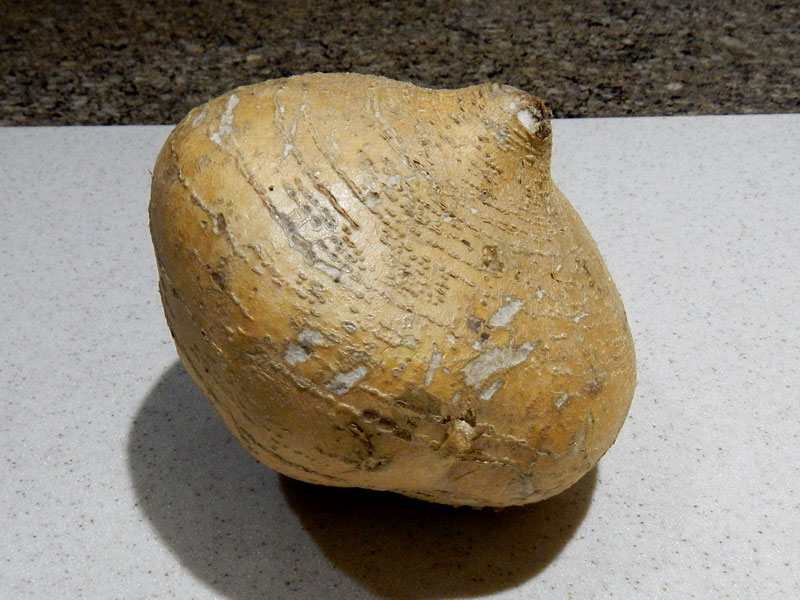
Daryl: Knarly, Dude! What is that thing?
Sam: I dunno. I found it in the grocery store. I thought you might know what to do with it?
Daryl: Ummm… Looks like a door stop to me!
OK, enough fun. This thing is a Jicama! (And it actually is gnarly, as you’ll see in a bit.)
Jicama, also called a Yam Bean or Mexican Turnip, is the tuberous root of a Mexican legume vine. The vine itself can grow very large, over 15 feet tall and the root can be as large as 6 feet in diameter. Needless to say, you won’t find one that large in the grocery store!
The ones you will find are usually about 8 inches in diameter. The outside should be yellowish tan and papery. When you pick up a good one, you will be surprised at how heavy it is. The reason it’s so hefty is that it can be up to 90% water! The inside is white and crisp, and the taste is somewhere between an apple, a pear and a raw potato. It is a starchy root which is most often eaten raw, although it can be cooked, briefly, as in a stir fry.
This vegetable is a good thing to add to your diet if you don’t already eat it. Oligofructose inulin, which is a prebiotic, gives it the sweetish taste. It tastes good! And it’s a versatile food, as you’ll see in a bit!
It should not have major blemishes on it, which makes the one above a loser! Watch out for ones with dark spots or lots of damage like the one above. The pointy end should be clean, and not discolored like this.
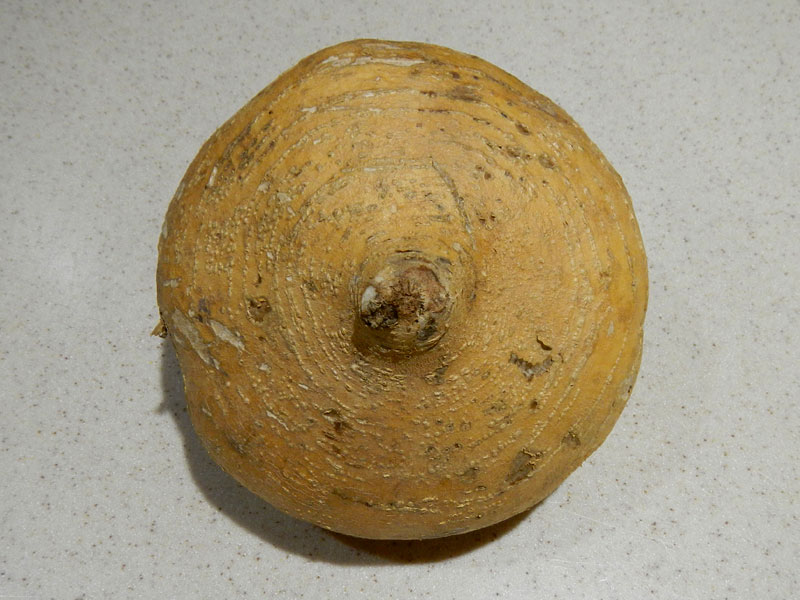
And you can see more of those dark spots in this pic.
A good jicama can be stored in a cool area of your kitchen for as long as a month. In the refrigerator will also work, but keep it dry. Don’t store it in a plastic bag!
Equipment
silicone cutting board
sharp knife
bowl of cold water
Mandolin slicer (optional)
Deli slicer (optional)
Grater (optional)
Method
When you are ready to eat it, you will have to peel it first. Use a knife for this. Don’t bother with the old potato peeler. I won’t work.
Put it on a silicone cutting board, and put your hand on the side to steady it. Make sure you have a good, stable position. Then slide the knife under the skin and slowly peel off a section of skin. You are going to remove the skin and the fibrous layer right beneath it. Keep rotating and peeling until all the skin is gone. Rinse the peeled jicama and move to a clean cutting board.
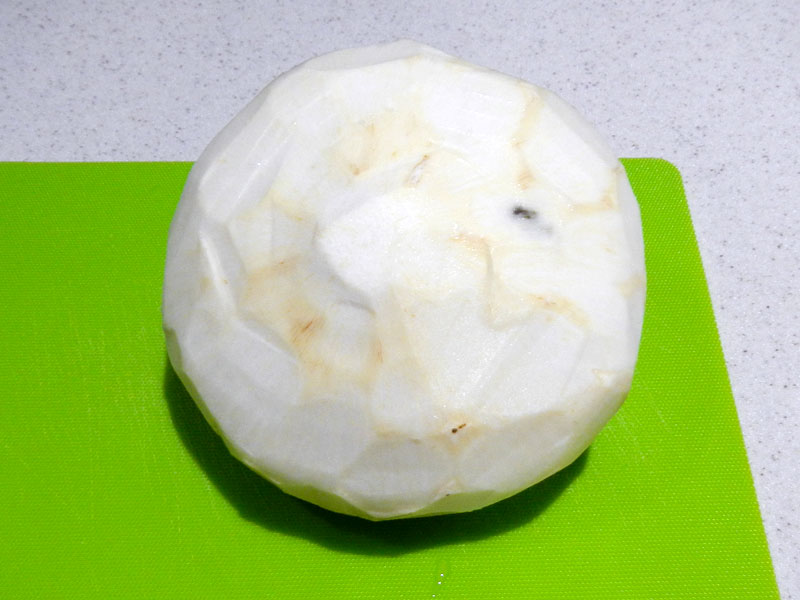
If your jicama is dry, hard to peel, and you start seeing dark spots on it like this:
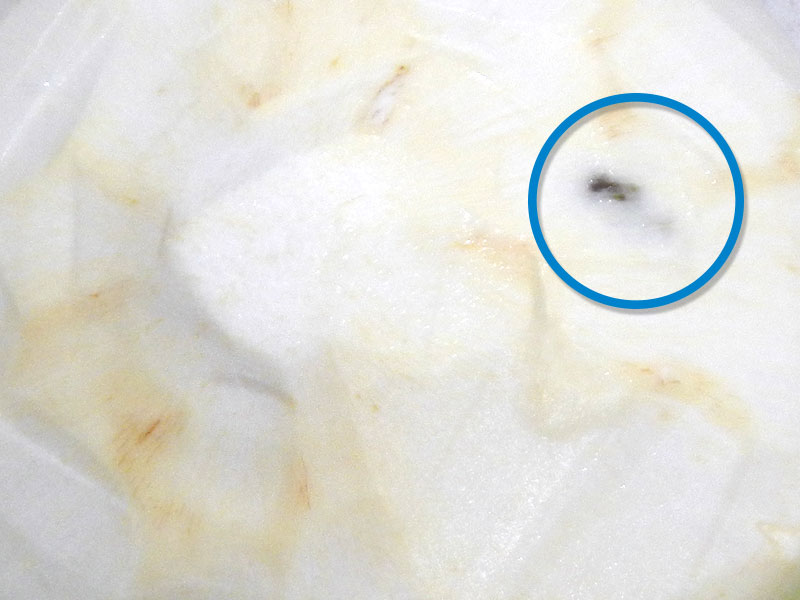
It’s actually no good. When I cut this one in half, it was full of ugly spots, and was dry and fibrous. I actually threw this one out and got a different one. The rest of the pictures are using the good one!
A little while later…
Here is what it should look like cut in half!
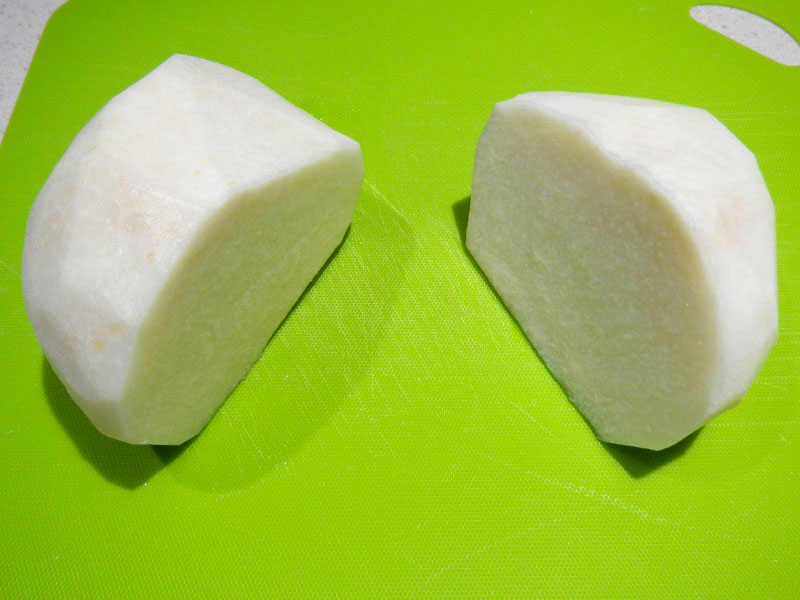
Where you go from here, is up to you and how you will use it.
For snacking and dipping: Cut it into sticks, about like french fries.
For noodles: Use an apple peeler, spiral peeler or similar tool to cut ribbons or narrow, long strips.
For raw, jumbo rigatoni (stuffable pasta-like tubes): use the Mandolin slicer to cut large, thin ovals.
For appetizer-sized raw taco shells: Trim off enough to make a nice circle shape with your knife. Use the mandolin slicer to cut thin circles. Cut the trimmings into sticks for snacking later.
For dinner-sized raw taco shells: Use the deli slicer to cut thin, large rounds.
For slaw or salads: Grate the amount you need with the grater.
Here’s the shapes I made.
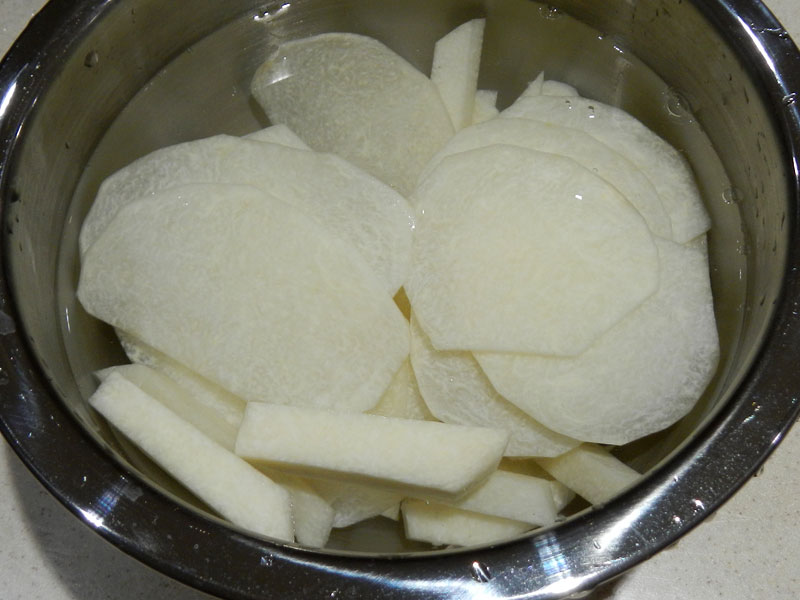
Notes
Store any cut up jicama that you don’t use right away, covered with water, in a sealed container in the refrigerator. If you are keeping it more than one day, change the water daily.
You can make jicama slaw with the same dressing as the coleslaw I wrote about earlier. That recipe is here. You can add it to the cabbage slaw, or make one from red and green bell peppers, jicama and carrot.
Another good salad is one made with an Asian dressing and similar ingredients!
Serve jicama sticks with hummus or other dips as an appetizer.
Conclusion
Now that you know how to handle it, you won’t be as scared of it, right! You’re going to start adding it to your diet, right? Here is one of the things I did with mine.
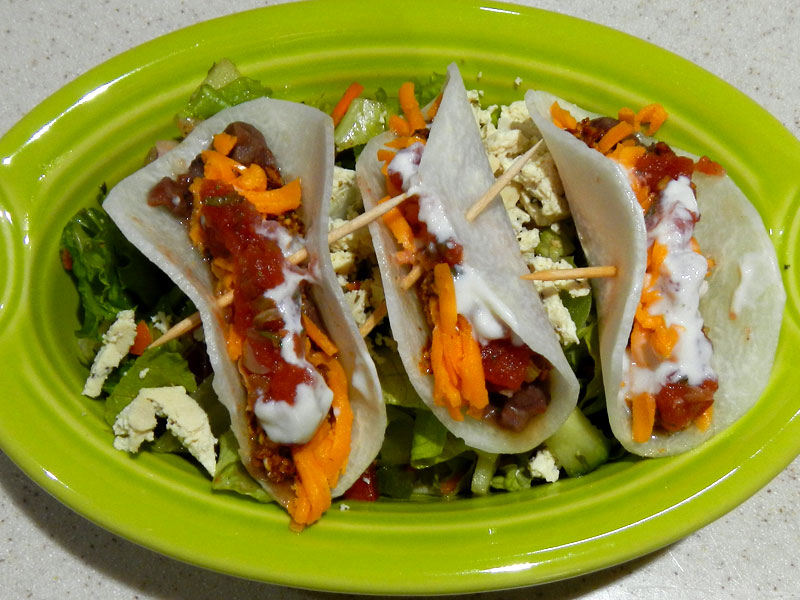
These are mini-tacos on top of a fresh salad with tofu feta! The tacos were filled with refried beans, taco filling, almond cheddar, artichoke-garlic salsa and topped with home made sour creme. They were really good!
Enjoy!